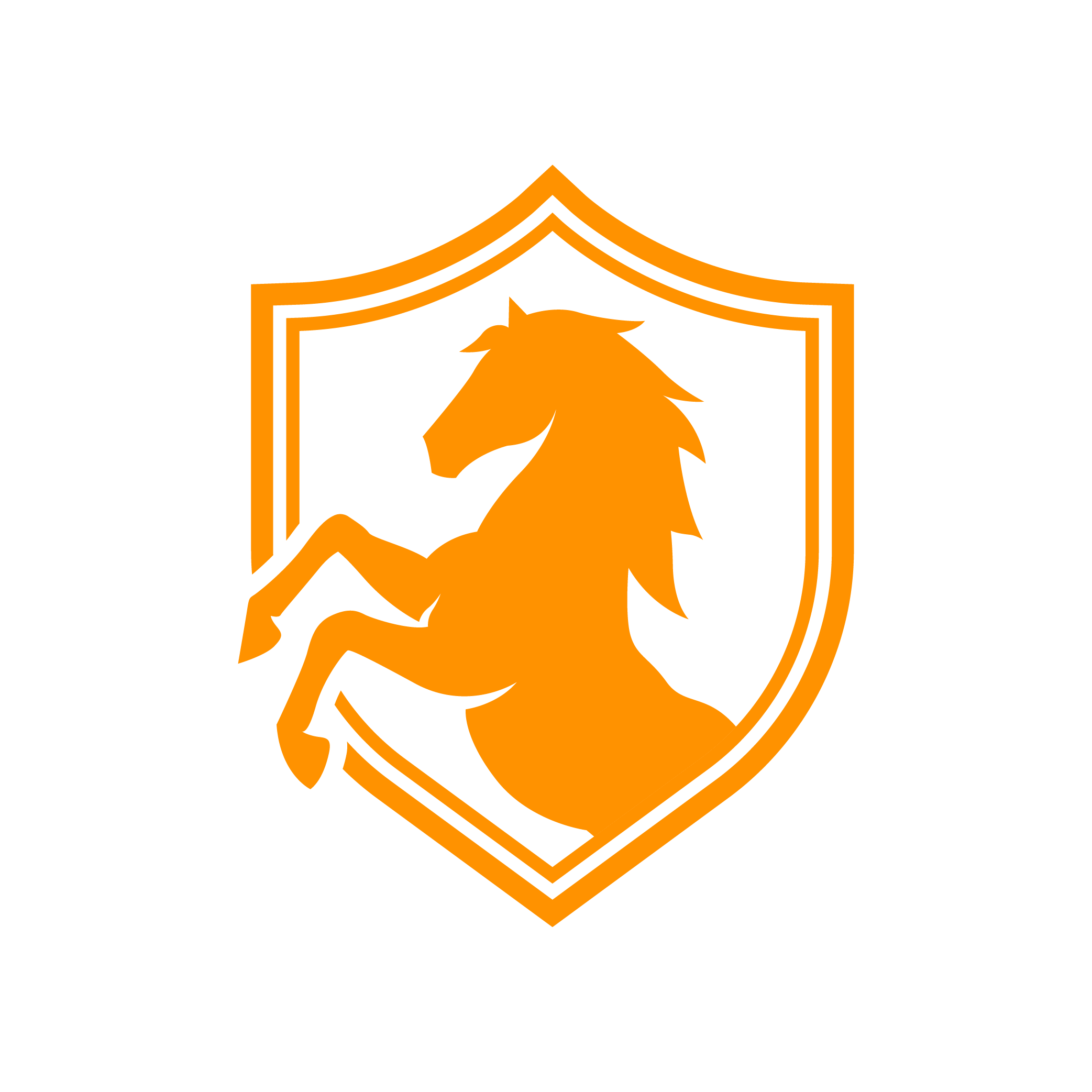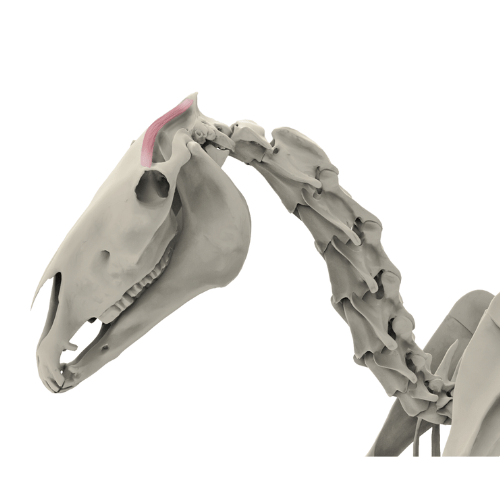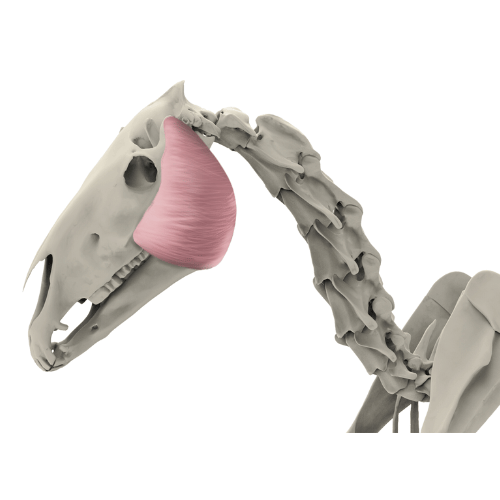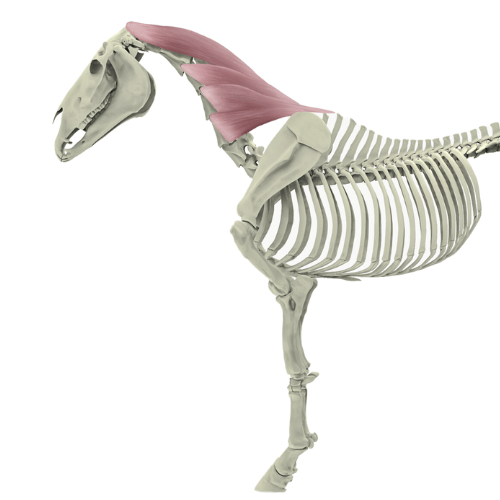The temporalis muscle, better known as the temporalis muscle, belongs to the important group of masticatory muscles in horses. It is located in the forehead and occurs in pairs—on both the right and left sides of the head. The temporalis plays a central role in feeding behavior and is closely linked to jaw function.
/wp:paragraphwp:heading
Anatomy and function of the temporalis muscle
/wp:headingwp:paragraph
The temporalis muscle originates in the temporal fossa and the medial (inner) edge of the zygomatic bone. From there, it runs to the coronoid process of the lower jaw, a bony prominence where it exerts its full power. This powerful muscle lifts the lower jaw and presses it against the upper jaw, enabling the chewing of food. It also assists in the lateral movement of the lower jaw, enabling the circular chewing motion typical of horses.
/wp:paragraphwp:heading
The main functions of the temporal muscle include:
/wp:headingwp:list
- wp:list-item
- Raising the lower jaw: For closing the mouth and chewing. /wp:list-item
- Pressing against the upper jaw: Allows crushing and chewing of food. /wp:list-item
- Lateral movement of the lower jaw: Supports the complex circular movement of the jaw during chewing. /wp:list-item
wp:list-item
wp:list-item
wp:heading
The influence of dental problems, stress and rideability problems in horses
/wp:headingwp:paragraph
Tension or irregularities in the temporalis muscle are often an indicator of deeper problems. Dental problems such as hooks, waves, or protruding edges can prevent the horse from moving its jaw freely, often resulting in excessive tension in the temporalis muscle. Likewise, rideability problems such as uneven head carriage or one-sided chewing can be traced back to the temporomandibular joint, which the temporalis muscle tries to stabilize.
/wp:paragraphwp:paragraph
Psychological stress – for example due to unfamiliar surroundings or excessive pressure to perform – also leads to jaw clenching or teeth grinding in many horses, which in turn overstrains the temporalis.
/wp:paragraphwp:heading
Detecting tension and atrophy in the temporal muscle
/wp:headingwp:paragraph
Tension in the temporalis muscle is often identified by a unilateral or bilateral bulge, resembling a small "bump" in the temporalis muscle area. This indicates that the muscle is tense and may be compensating for problems in the jaw or upper body. On the other hand, atrophy (weakness or atrophy) of the muscle may indicate that the horse is using the muscle less for various reasons, such as insufficient exercise or long-standing dental problems.
/wp:paragraphwp:heading
How to relieve tension and fascial adhesions in your horse's temporal muscle
/wp:headingwp:paragraph
With the NeedleyRoll fascia and massage roller for horses, the entire temporalis muscle can be worked evenly on both sides. Start with little to no pressure and work your way up gently. Pay close attention to your horse's reactions to find out what works for him. Stay mindful and try different pressure levels and movements to gently release tension and adhesions and relax the muscle.
/wp:paragraphwp:heading
Keep an eye on the temporal muscle
/wp:headingwp:paragraph
Regular examinations of the temporalis muscle can help detect tension early and identify its causes. Targeted massage, releasing tension, and jaw and head movement exercises can relax the temporalis muscle and mobilize the chewing muscles as a whole. Regular dental checkups by a veterinarian or dental specialist are also important to ensure that the horse does not have any chewing problems that could place long-term strain on the temporalis muscle.
/wp:paragraphwp:heading
Facts about the temporalis muscle
/wp:headingwp:list
- wp:list-item
- Origin: temporal fossa and medially on the zygomatic bone /wp:list-item
- Insertion: coronoid process of the mandible /wp:list-item
- Function: Lifting, pressing and pulling the lower jaw sideways against the upper jaw /wp:list-item
- Innervation: masticator nerve of the mandibular nerve /wp:list-item
wp:list-item
wp:list-item
wp:list-item
wp:heading
Conclusion: A relaxed temporal muscle for a healthy and happy horse
/wp:headingwp:paragraph
The temporalis muscle is small but powerful and of great importance for the horse's well-being and chewing mechanics. A well-maintained and relaxed temporalis muscle contributes to a healthy head and jaw posture and ensures that the horse can feed freely and pain-free.
/wp:paragraphwp:buttons
/wp:buttons
wp:woocommerce/all-products {"columns":3,"rows":3,"alignButtons":false,"contentVisibility":{"orderBy":true},"orderby":"date","layoutConfig":[["woocommerce/product-image",{"ima geSizing":"thumbnail"}],["woocommerce/product-title"],["woocommerce/product-price"],["woocommerce/product-rating"],["woocommerce/product-button"]]}
/wp:woocommerce/all-products




Leave a comment
This site is protected by hCaptcha and the hCaptcha Privacy Policy and Terms of Service apply.